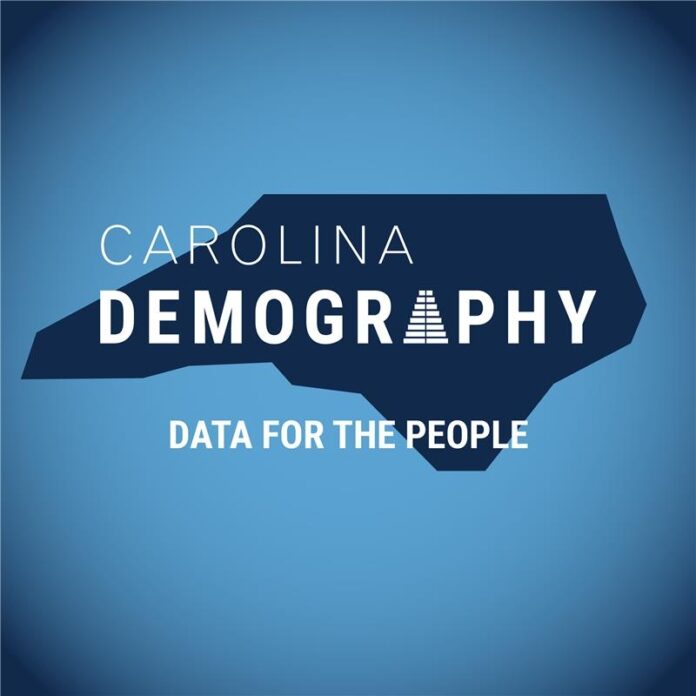The school landscape is changing in North Carolina.
Although the majority of school-age children still attend traditional public schools (hereafter public), attendance has fallen significantly over the past decade. While the net decline in numbers of K-12 students attending district schools over time is well-documented, very little is known about where the students went.
Specifically, if students aren’t attending district public schools, where are they ending up?
One way to measure or gauge this is by looking at K-12 school market share.
What is school market share?
Market share refers to the portion of the market controlled by a certain product or service. In this case, school market share refers to the percentage of the current K-12 population in an area who are enrolled in district publics, charters, privates and homeschools.
While market share does not account for broader demographic changes, such as migration or variations in birth and death rates, it does show how students distribute among various educational options. Observing changes in market share over time can shed light on the growing popularity of alternative schooling choices.
In North Carolina, market share for district public schools (and the alternative educational options) exhibits substantial year to year variation. For example, district public school market share fell sharply from 84% in 2015 to 79% in 2016, only to rebound to 82% in 2017 (Figure 1).
The overall trend, however, is clear: In 2015, 84% of school-age students in North Carolina were served by district public schools while in 2024, districts served 76% — an 8-point decrease in 10 years. Despite fluctuation, there is a consistent overall decrease in enrollment in North Carolina district public schools relative to alternative educational options.
Figure 1: Despite short-term fluctuations, the percentage of the North Carolina K-12 population enrolled in district public schools decreased substantially from 2015 to 2024.
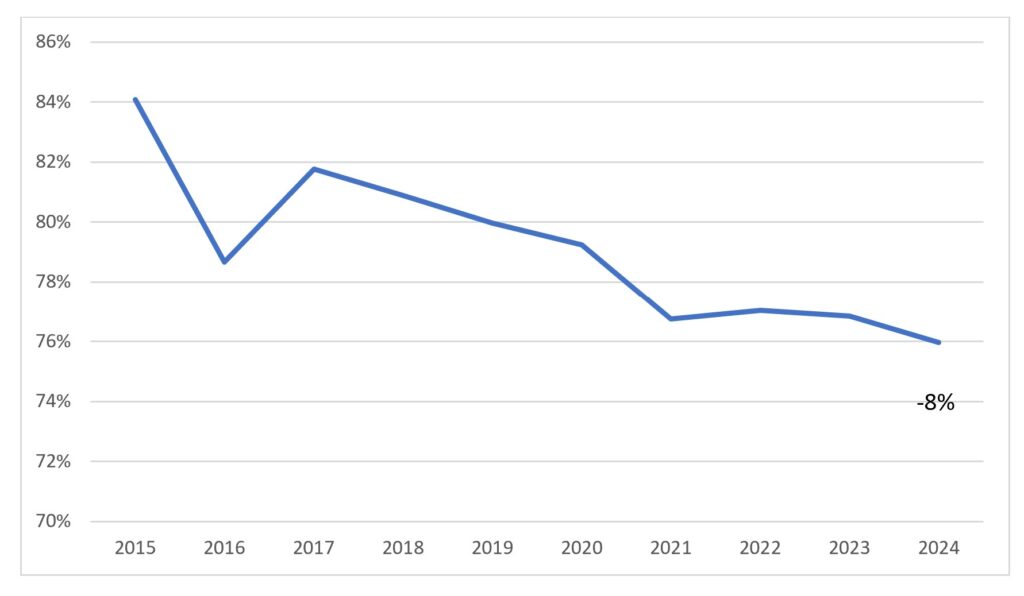
District school-alternative market trends
If district school market share is declining, what alternatives are filling the gap?
Between 2015 and 2024, market share grew by 4% for charter schools, 1% for private schools, and 3% for homeschools (Figure 2). While these alternative school options experienced year-to-year fluctuations, they also reflect a broader upward trend.
Some of this variability may stem from demographic shifts, but state policies and external factors likely played a significant role. For instance, the increase in homeschool enrollment between 2020 and 2021 was probably driven, at least in-part, by parents seeking remote learning options during the COVID-19 disruptions to in-person public schooling. Similarly, private school enrollment saw a notable half-percentage point increase between 2021 and 2022 — the largest jump in this eight-year span. This coincided with nearly $20 million in additional funding for the Opportunity Scholarship program in 2021 and relaxed income eligibility requirements.
Figure 2: Despite fluctuations, private, charter, and homeschool school market share in North Carolina increased by (from 1% to 4%) overall from 2015 to 2024.
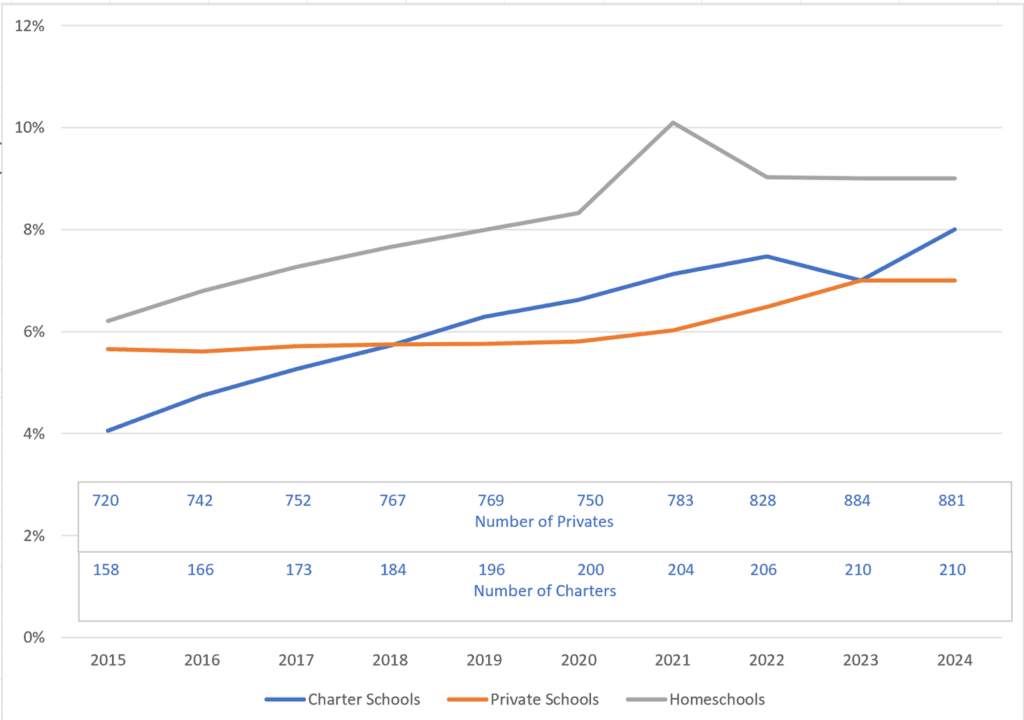
County-level changes in district public school market share
To make sense of statewide trends, understanding how market share has shifted at the local, county level is crucial. Between 2015 and 2024, 97 out of 100 counties experienced a decline in district public school market share. Meanwhile, Graham, Alleghany, and Edgecombe counties saw a modest increase of less than one percent during the same period.
Overall, 20 counties lost 10% or more of their market share to alternative schooling options, 52 counties saw losses between 5% and 9.9%, and 25 counties lost 4.9% or less (Figure 3).
Figure 3: Most NC district schools have lost between 5% and 9% of public-school students to other available school options.
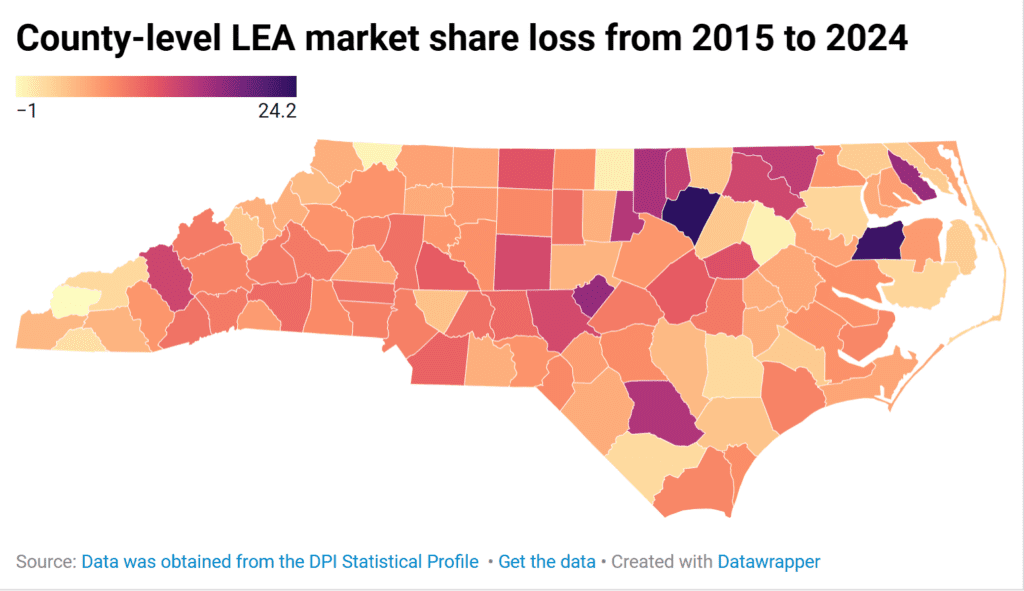
In 2024, district public schools in every North Carolina county still served the majority of K-12 students, but alternative school options are rapidly becoming strong contenders within individual counties.
In Northampton County, for example, district public schools held a narrow majority with just 45% of the market share in 2024, closely followed by charter schools at 43%. In fact, in the years immediately after the COVID pandemic, the district public school market share in Northampton briefly dropped below that of charter schools. Notably, this decline in market share cannot be attributed to the rise of any single type of alternative school. Rather, the type of school with the second-largest market share after district public schools varies significantly across North Carolina’s 100 counties (Figure 4).
Figure 4: District public schools have the greatest market share in every county in North Carolina as of 2024 but are in decline. However, the type of school that holds the second greatest market share differs by county.
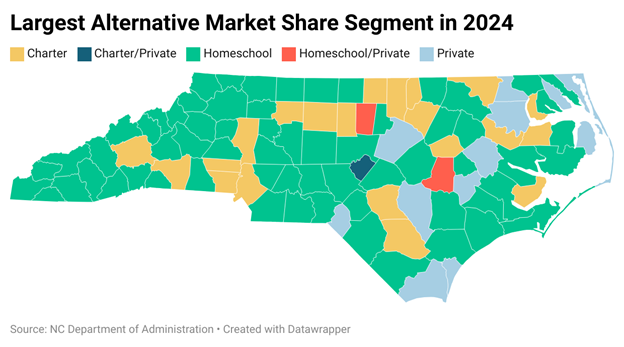
State-level implications
It is important to note that this analysis does not account for whether students reside in the county where they attend school. All alternative market share segments allow for the possibility that students may travel out of district to attend school.
Despite this, there’s a broad trend of declining district public school market share over 10-year period that appears to have been exacerbated by the influence of the COVID pandemic, the expansion of the Opportunity Scholarship program, charter school openings, among a context of broader demographic shifts across the state.
While it is unknown how public-school enrollment will change in North Carolina in the next decade, the availability and accessibility of other school options will certainly be influential.
Availability of private school vouchers for the 2024-25 school year was increased significantly beyond 2021 levels by House Bill 529, which expanded the State’s Opportunity Scholarship Program by providing for private school tuition scholarships of $3,000-$7,000 while decreasing application barriers. Already, the number of students receiving vouchers in 2024-25 has leapt by 144% over the previous 2023-24 school year, following modest year to year increases over the previous decade.
It is unknown, however, what proportion of these new scholarships have been secured by existing versus new private school students. Cost is likely a major barrier to the selection of private school options by parents — and may be behind private school’s historically low market share in North Carolina. It is possible, however, that significant increases to private school subsidies could lead to substantial increases in private school market share.
Editor’s Notes: There are two ongoing challenges in looking at market share in North Carolina.
Unlike the data for the other educational sectors, the data on homeschools is an estimate. According to the Division of Non-Public Education, “The numbers of students are estimates based on information submitted by actual open schools during each school year.”
The other challenge is what denominator to use. In this case, the researchers used the sum of the students in each sector as the denominator.


